Knots, ropes and running rigging
The best way to learn knots is to carry a piece of thin cord in your pocket and practise during quiet moments until you can do them with your eyes shut.
- Bight and loop The first nautical terms to learn.
1 Bight

2 Loop

- Reef knot Used to tie two lines of equal thickness together, such as reefing lines and sail ties. Remember the rule: left over right. Right over left.
1 Bring the two ends of the rope together, cross left over right and tuck under. and tuck under.

2 Continuing with the same end, cross right over left and tuck under.
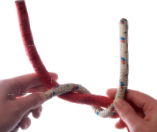
3 Pull tight and check.

For an interactive lesson, go to www.uksa.org/knotmaster and master 5 knots in 5 days.

- Tugman’s hitch Used to attach a towline to a strong point such as a sampson post, cleat or winch. This knot holds well and is easy to undo even under load. Also known as the Lighterman’s and Boatman’s hitch.
1 Take several turns around the post, cleat or winch.
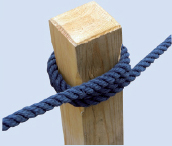
- Bowline Ties a nonslip knot in the end of a rope. Used to form a secure loop in the end of a mooring line or to tie a sheet to the clew of a sail. Remember the adage: The rabbit comes out of its hole, runs round the tree then goes back down the hole again.
1 Form a crossing turn in the end of the rope.

2 Form the loop (rabbit hole) to the size required, with the outer end upward.

3 Round the back of the standing part.

4 And guide it down through the small loop.

5 Pull the end through the small loop.

6 Pull tight and check the tail is long enough not to pull out.

2 Take the working end under the standing part and over the post.

3 Repeat 2 but in the opposite direction.

4 Repeat 2 again to lock off.

- Cleating a rope
The OXO method of tying off a mooring line or halyard on a horn cleat.
1 Take a full turn around the cleat.

2 Cross over in a figure-of-eight. . . .

3 . . . and finish with a final turn around the cleat.

- Single sheet bend Used to tie two lines of unequal thickness together, such as sail ties.
1 Form a bight in the thicker rope.

2 2 Pass the end of the thinner rope up through the bight and under.
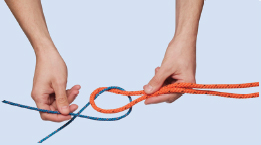
- Coiling rope
Loose rope ends like halyard tails should be coiled and secured with the tail so that they are ready to be shaken out at a moment’s notice.
1 Take the end of the rope in one hand, stretch it out with the other, twist it clockwise. . . .

2 . . . and transfer each loop to the first hand.

3 Once coiled, make several turns with the working end around the coils and feed through the top loop. . .

4 . . . and pull tight.

3 Repeat 2 again to lock off.

4 Repeat 2 again to lock off. k off.
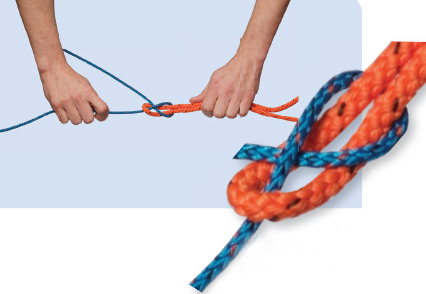
- Lorry Driver’s hitch
Used to tension a line or strap securing a boat on its trailer or on deck. Very easy to undo. Tie off one end of the rope to a secure point and throw over the boat, then pass the working end of the rope through a secure point on the opposite side.
1 Form a loop in the rope at the top of the downward side. .

2 Now pull a short length of the standing end of the rope back through the loop to form two further loops above and below.

3 Pass the working end through the lower loop. . .

4 . . .and tension down.
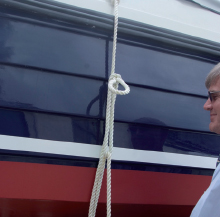
5 Secure with two half hitches.

6 For added security tie the upper loop into a half hitch around the standing part.


- Clove hitch
Used to attach a temporary line to a rail or ring.
1 Easy to undo, so make sure you leave a long working end.

2 Pass the working end around the object and back across itself.

3 Form another half hitch.

4 Pull through. . .

5 . . . And tighten.

- Round turn and two half hitches Used to attach a line to a post or ring. Easy to untie, even under load, so ideal for securing a mooring line or fenders.
1 Pass the end round the back and form a half hitch.

2 2 Repeat to form a second half hitch.

3 Pull tight.
